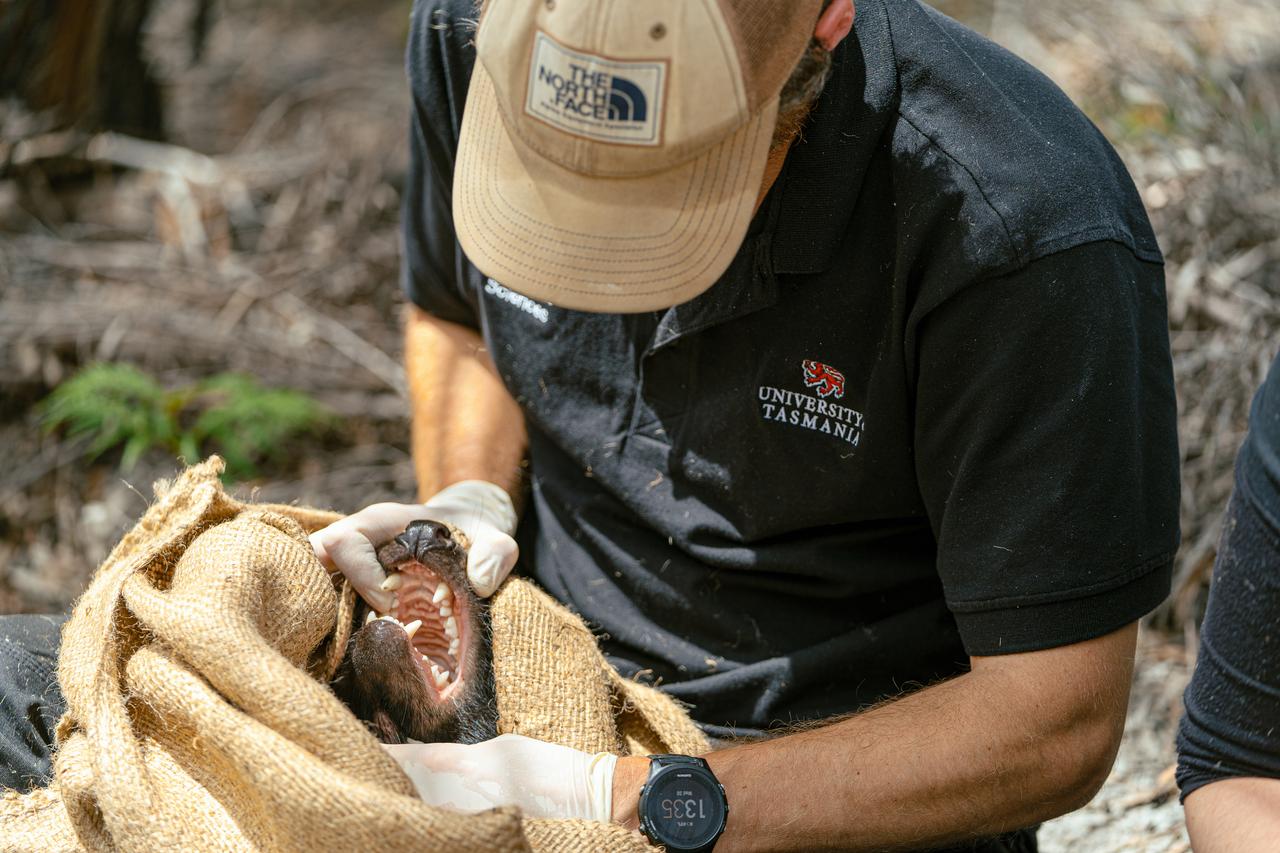Research led by the University of Tasmania has found that the deadly devil facial tumour disease (DFTD) responsible for wiping out two-thirds of the species over the last 30 years is evolving to coexist with devil populations.
University of Tasmania disease ecologist Dr Rodrigo Hamede said that changes in tumour genetic diversity in long-term affected areas like West Pencil Pine in the northwest of Tasmania resulted in lower infection rates and devil population decline levelling off.
"This could be due to differences in how deadly and how transmissible different tumour variants are, or due to devils developing resilience against DFTD, or a combination of both, but we have found that they can now coexist," Dr Hamede said.
The research team from across Australia, France and USA analysed 159 tumour genomes of the West Pencil Pine devil population to assess the dynamics of tumour variants during the course of the decade-long epidemic.
"We know that shortly after DFTD arrived in West Pencil Pine in 2006, it reached its peak of genetic diversity," Dr Hamede said.
"Over time, some DFTD variants were weeded out, while a few became better adapted and fixed in the population".
"This suggests that, through selective processes, the tumour is fine tuning its optimal virulence (how deadly it is), a trade-off between transmission rate and disease-induced mortality in the animals".
"This means that DFTD is very unlikely to drive the devil to extinction, but it also means the disease will not disappear, it's an evolutionary deal to coexist with each other."

Dr Hamede said that the research proves that evolutionary processes can lead to the coexistence of host populations and diseases, even when disease-induced mortality is extremely high, such as in DFTD.
He also argued that while a reduction of infection rates and population decline are good news, it's still critical to keep monitoring and protecting long-term affected devil populations.
"These adapted populations are particularly valuable when planning conservation efforts, as they possess key adaptive traits for future generations of devils".
"We also need to make sure we reduce all other threatening processes, such has habitat loss and fragmentation, genetic deterioration in local populations and roadkill.
"Extinctions are rarely driven by one factor, but act in synergy with other threatening processes."
This study 'The tumour is in the detail: local phylogenetic, population and epidemiological dynamics of a transmissible cancer in Tasmanian devils' was published in the journal Evolutionary Applications, andauthored by Rodrigo Hamede, Nicholas Fountain-Jones, Fernando Arce, Menna Jones, Andrew Storfer, Paul A. Hohenlohe, Hamish McCallum, Benjamin Roche, Beata Ujvari, Frédéric Thomas.






